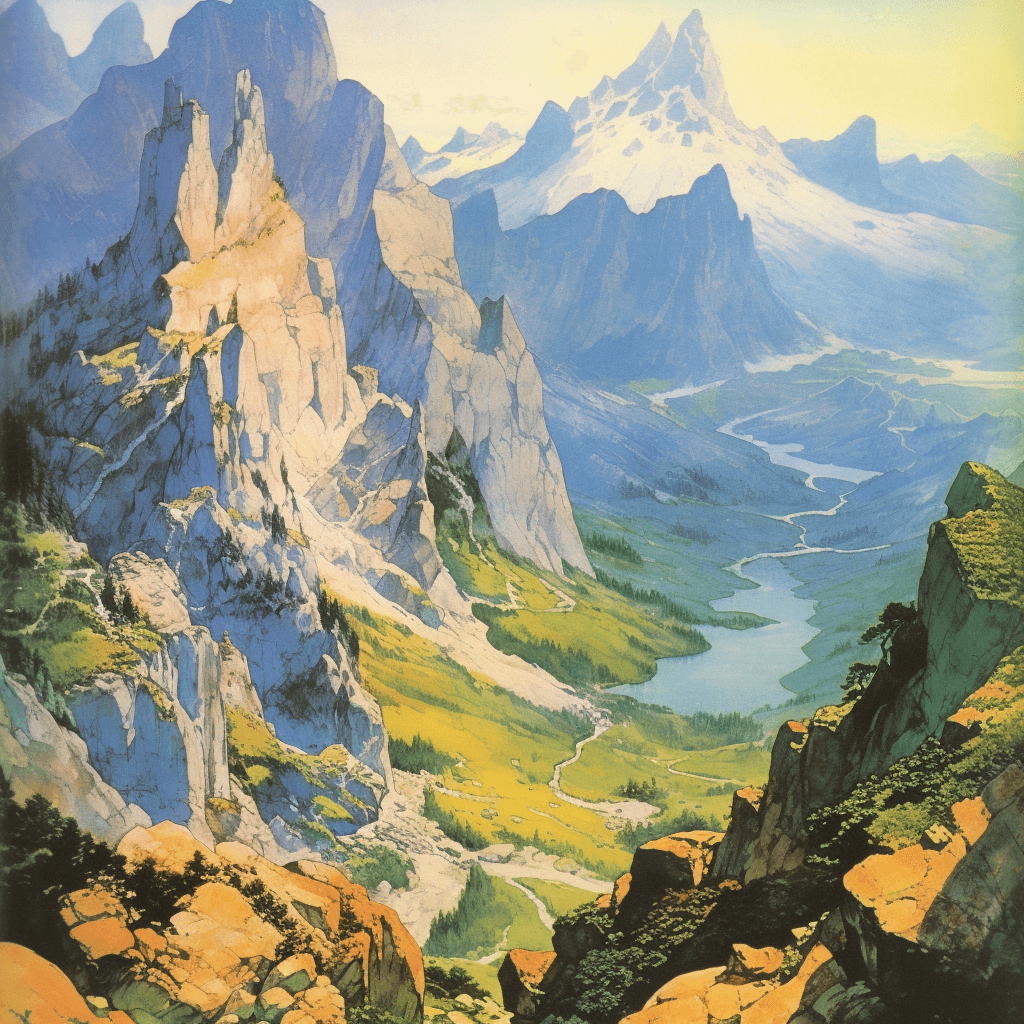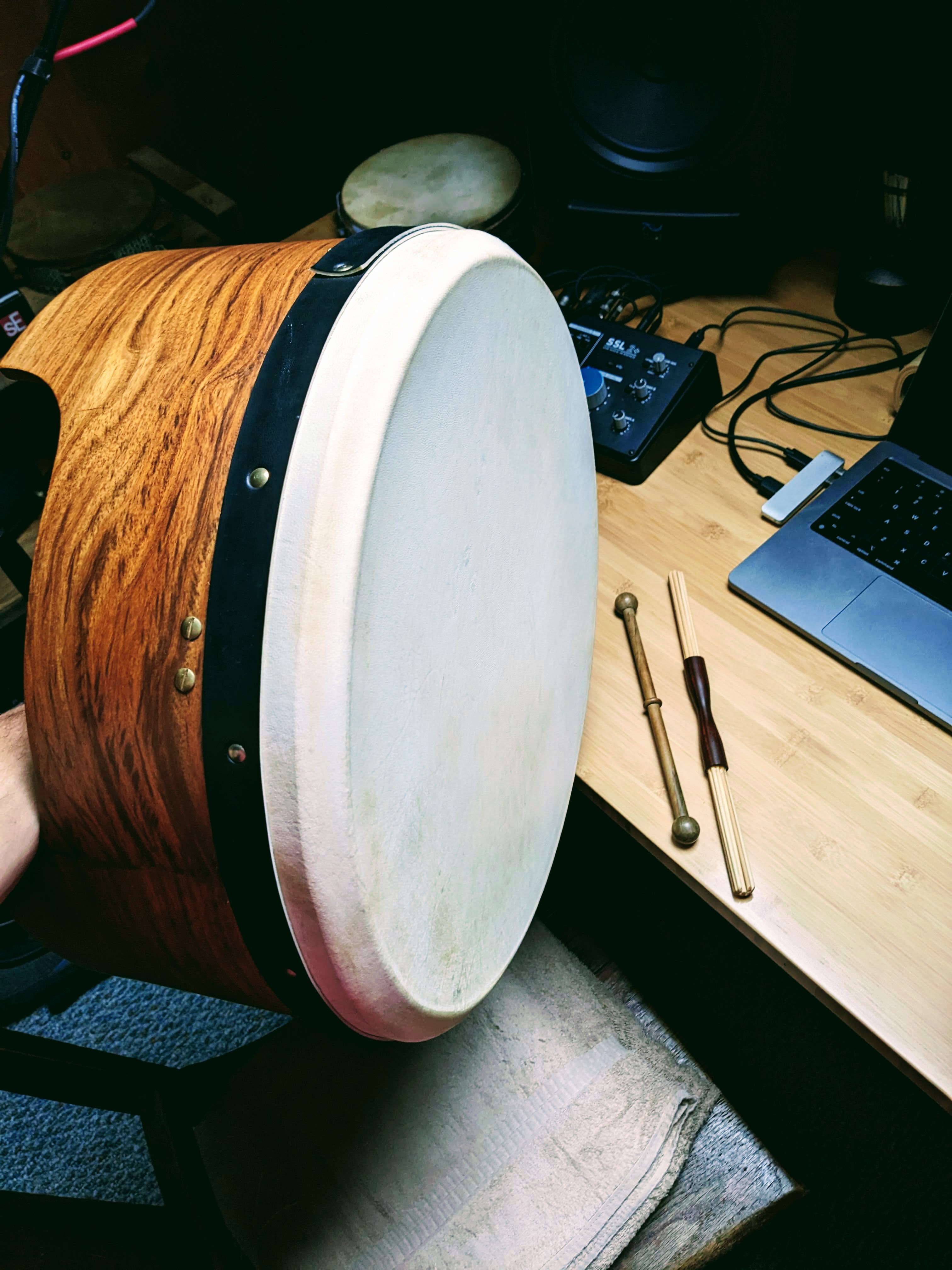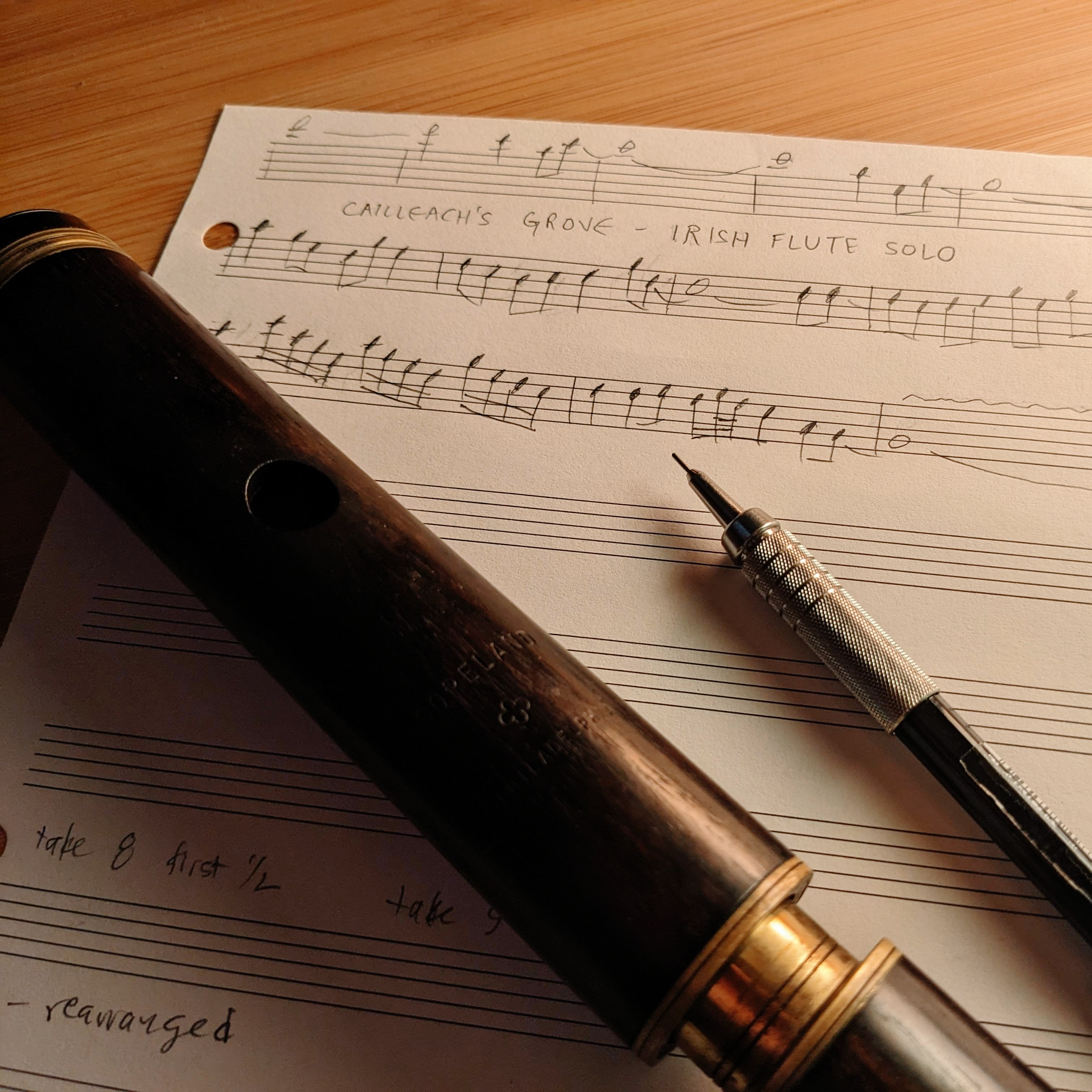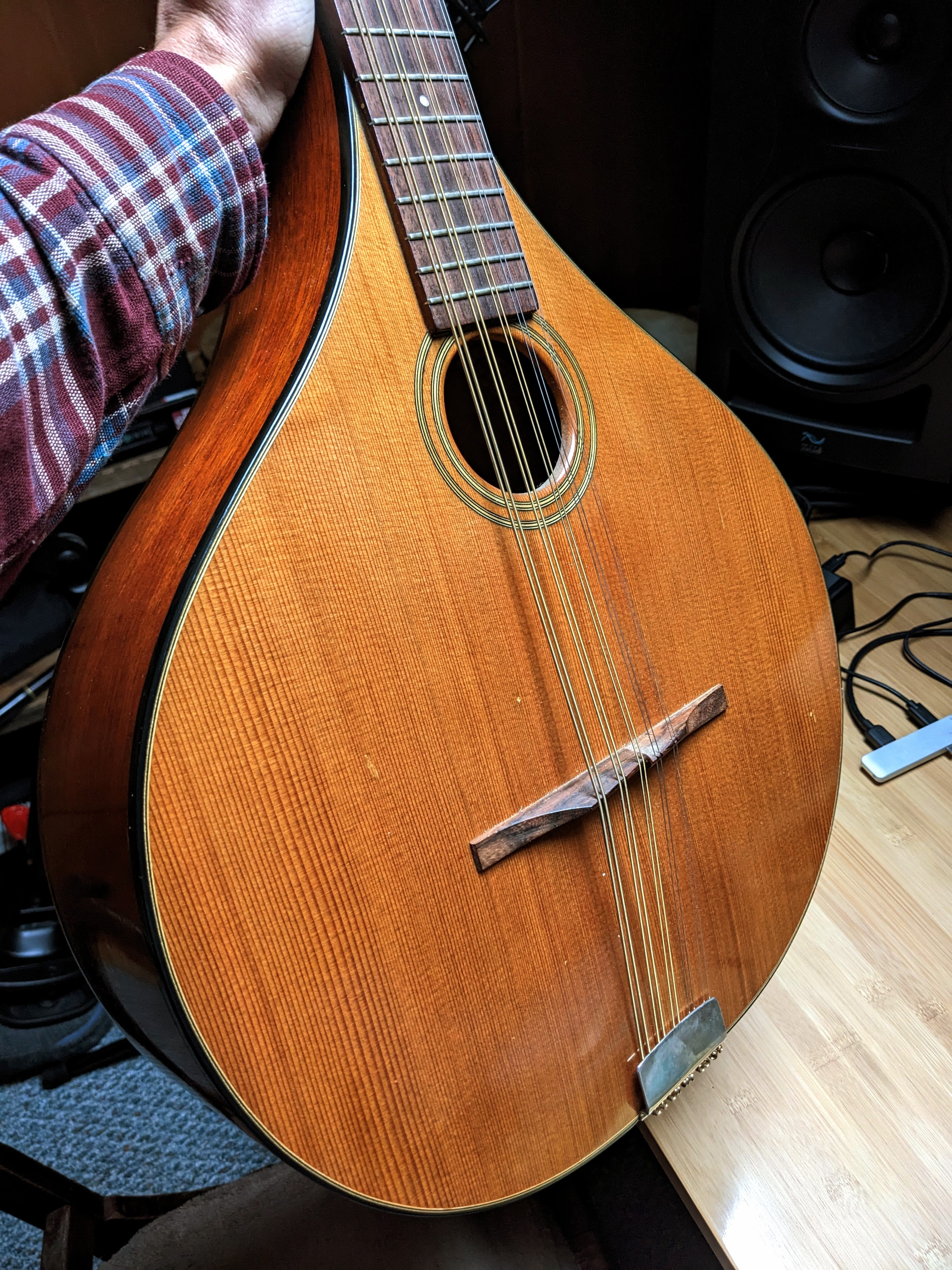
Aug 13, 2023
I'm often haunted by what feel like memories of ancient places, long forgotten in conscious memory, but remembered somewhere deep in my bones.
I see forests with thousand-year-old trees draped in moss, lush valleys, and sacred groves with the distant echo of drums and bare feet dancing on the earth.
Cailleach's Grove is one such place–a mythical forest grove where my ancestors might have gathered to hold ceremonies and musical gatherings. It's part of a story cycle I've been telling my six-year-old for the past several years, and I wanted to convey that feeling of deep memory, longing and celebration with this track.
Genesis of the musical idea
This song, like most of my songs recently, began with a piano improvisation. That's often how my best songs come out - I sit down to play, usually late at night after the kids are in bed, and a minute or two later I have the entire melody and chord progression locked in.
(The actual recording, production, and mixing process took another 15 hours, though - this was one of the most complex pieces I've ever done!)
Serendipitous vocals lead to a musical style breakthrough
This was initially a purely instrumental track, as most of my music is. When it was more or less done, round about half past midnight, as I was preparing to unplug and go to bed, I had the wild hair to record some vocals. I wanted something ethereal that sounded like it was floating out of ancient memory.
I pressed record, and the lyrics came to me on the spot while recording the first vocal take:
Far
Away
To the east
There is a place
Locked away
In memory
After recording that, I immediately thought of the beautiful vocal harmonies by the folk group Darlingside, so I recorded three more vocal layers in single takes, with jazz-inspired close harmonies using add-9 and suspended chords.
My lack of vocal skill usually means I have to do dozens of vocal takes and comp heavily, but by a stroke of luck this one just came out exactly how I wanted it the first time.
I used to sing around the campfire every summer with my extended family (they're all musical), but after those days, I didn't really put much effort into singing, and thus haven't developed my voice much. I've never taken a voice lesson. I have decent pitch accuracy, but not much power, and my voice tends to sound harsh and strident when I sing louder.
I also have this weird fantasy of singing into a microphone on stage (I've only ever performed in front of an audience on the saxophone), so for this song, I literally grabbed the microphone out of the mic clip (a Lewitt LCT440 for the recording nerds) and held it right up to my mouth and sang in a really soft, breathy voice.
I think it suits my voice well to sing more softly like this, and it was one of the first times that I really enjoyed what my voice sounded like in a recording.
I recently listened to a stellar podcast interview with composer and producer Cobaine Ivory, on Brian Funk's Music Production Podcast (episode #288). Cobaine was talking about having this revelatory moment in his life where he realized that his body was telling him which music to create by giving him chills and goosebumps. That became his north star, his compass, his lodestone.
I had that same feeling of chills and goosebumps the first time I listened back to this four-part vocal harmony on Cailleach's Grove. This is not to toot my own horn, just to say that with this song, I finally feel like I finally discovered my own unique musical style that blends all the styles of music I love most–film scores, jazz, beats, and Celtic folk music–in a way that I never have before, into something totally my own.
After 15 years of composing and producing music on and off, I've been waiting a long time for this!
A new yet ancient rhythm instrument
The very first instrument I wanted to learn–long before I started playing saxophone–was the drum kit.
My parents (wisely) bought me a snare drum and a rudiments book to see if I was really interested, but I remember feeling bored out of my mind without cymbals, kick and toms.
In any case, I feel like at some level I've always wanted to be a drummer. If I watch a jazz concert on YouTube these days, my eyes are glued to the drummer the entire time.
My first experience with drum programming in FL Studio when I was 16 years old helped me scratch that itch, but I still longed for something that felt more authentically me, and more of a rooted, connecting, embodied drumming experience. Now, 18 years later, I've discovered a bit more of that connection with an entirely new (yet ancient) instrument.
Having grown up in a household with two pump organs, a piano, a Celtic harp, hammered dulcimer, tenor guitar, banjo, mandolin, hand percussion, and display cases full of antique bizarro instruments, I adopted my dad's instrument collector instinct.
I often troll online auction sites for obscure instruments, and a few weeks ago stumbled across a listing mislabeled as "Toca hand drum," but judging by the photos, it was actually a beautiful rosewood bodhrán, a traditional Irish drum, with a goatskin head. Not made by Toca, and definitely not a hand drum!
When I won the auction for $26, I was excited, but little did I know how much I would really connect with the sound and feel of playing this amazing instrument. Look at that wood grain!

You play bodhrán with a stick called a "tipper", which you hold in your right hand (for righties). You flick your wrist back and forth like you're shaking something off of your hand, which clacks the tipper against the skin. Hitting the skin in different places, combined with muting the skin from the inside of the drum with your left hand, produces a wide variety of sounds.
You can also dig the heel of your left hand into the skin, which can create some mind-blowing pitch bending effects that remind me of the "bass drop" sound so common in movie trailers and dance music. I recently heard this exact technique featured in the Rings of Power soundtrack by Bear McCreary, in one of the Harfoot themes.
Being a "right now" kind of person, I binge-watched a series of bodhrán video tutorials by Ruairi Glasheen. I then binge-practiced for a couple days, as much as my right wrist would let me, until I could play well enough to record it.
With a touch of Bitwig's elastic timing correction to compensate for my ineptness, I ended up with some really organic grooves that stir some of that ancient bone memory inside me. In Cailleach's Grove, you can hear the bodhrán first at 0:40, right after the vocal verse.
Mixed with some other hand percussion–like an antique Egyptian tambourine also from an auction site–I layered different techniques, sometimes playing with just my hands, and sometimes playing it like a Japanese taiko, clacking on the rim of the bodhrán with claves.
Irish wood flute
I grew up studying jazz saxophone, and I love to improvise.
When producing original music, I usually improvise my solos (including the other two solos on this track), but I was struggling to nail the sort of Lord of the Rings + Princess Mononoke stylistic sound with the Irish flute solo at 1:02, so I took the time to really work on this one and write it out fully.
Shown below is the written part (minus traditional Irish embellishments added while recording) along with the beautiful Copeland Irish flute I played, on generous loan from my parents.

What's that mystery instrument at 1:45?
Good question!
It's a cittern, which is kind of like a really large and bassy mandolin, with an extra pair of strings, for a total of 10 strings.
It's been used in Nordic and Celtic folk music, and has a wonderfully unique sound, reminiscent of an oud or lute.

Fun fact #1: This cittern used to be owned by Nancy Wilson of Heart!
Fun fact #2: That dent in the center-left of the photo is from when my 3-year-old daughter was swinging a rope with a carabiner on the end of it inside the tiny 16' square cabin we were living in. Needless to say we banned swinging ropes around inside the house!
I tune my cittern in fifths, similar to a mandolin, so all the scales and patterns I know on mandolin translate right over. It's tuned Eb • Bb • F • C • G, which is pretty uncommon, so I just capo up as needed. That's something I love about violin-family instruments - once you learn one, it gets a lot easier to pick up others.
My favorite cittern player is Ale Carr - check out his album with fiddler Esko Järvelä. It's my most-listened-to folk album of all time. So beautiful!
What genre do I call this?
I sent this track to an old friend recently, and she said this song reminded her of orchestral music in its structure, rather than folk music, since it goes to a lot more different places than you might see in a typical folk song or electronic track.
There are major folk influences, clearly, and I think my jazz background also shines through, despite that I didn't record any saxophone for this track (it just didn't call for that brassy/jazzy sound).
So I could go with "orchestral jazz-folk", but there's also a strong cinematic feel, which echoes my love of film scores.
So I think I'm going to go with "cinematic jazz-folk".
There's no "Cinematic Jazz Folk" playlist on Spotify yet - I'll have to rectify that! The closest thing is "Cinematic Indie Folk", but the strong jazz & electronic influences in this track just don't seem to crop up that in playlist.
What imagery does this track inspire for you?
I'm curious if you get any visual images that pop in your mind when listening to this track, or any feelings or memories.
[how to do comments?]
🔥 Don't Miss New Tracks 🌎
Get my track drop emails:


